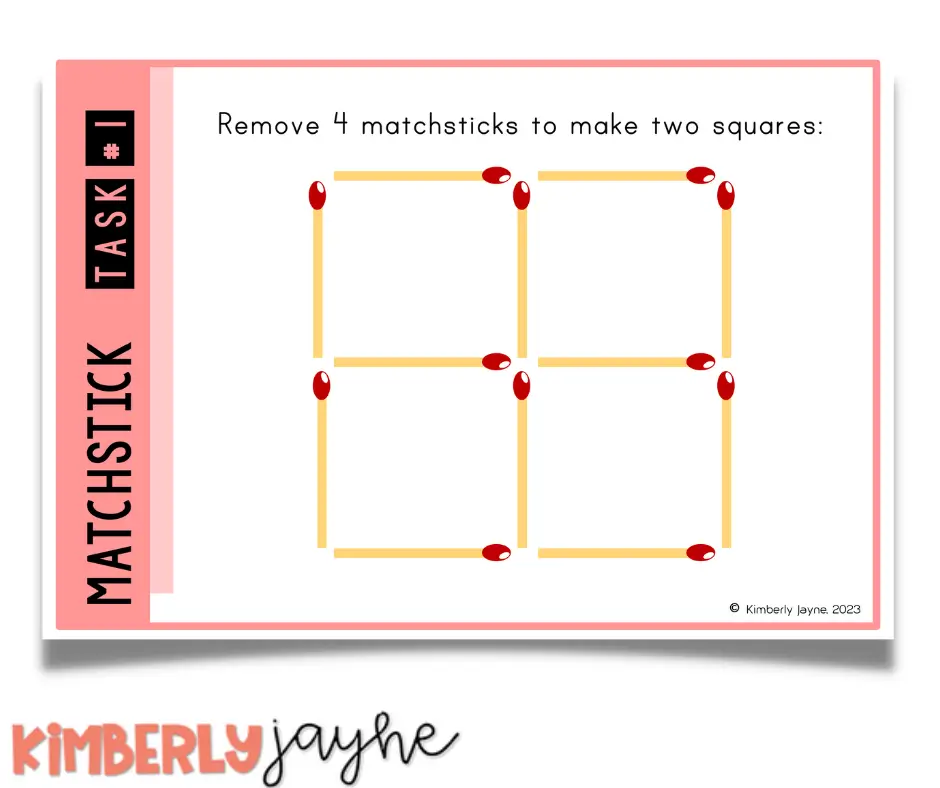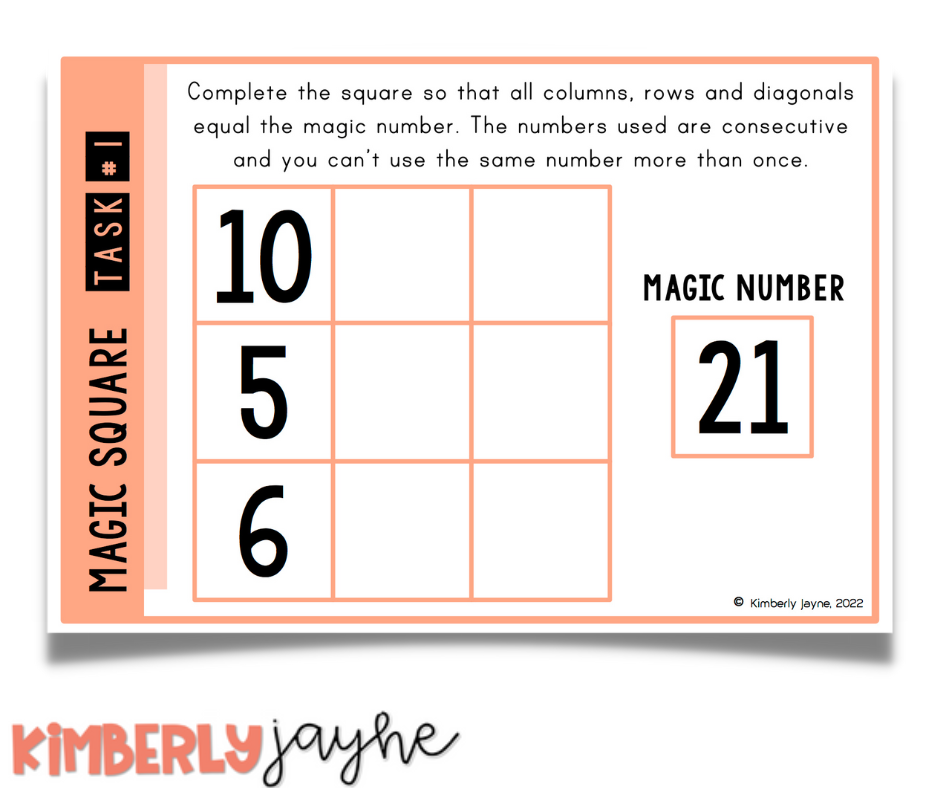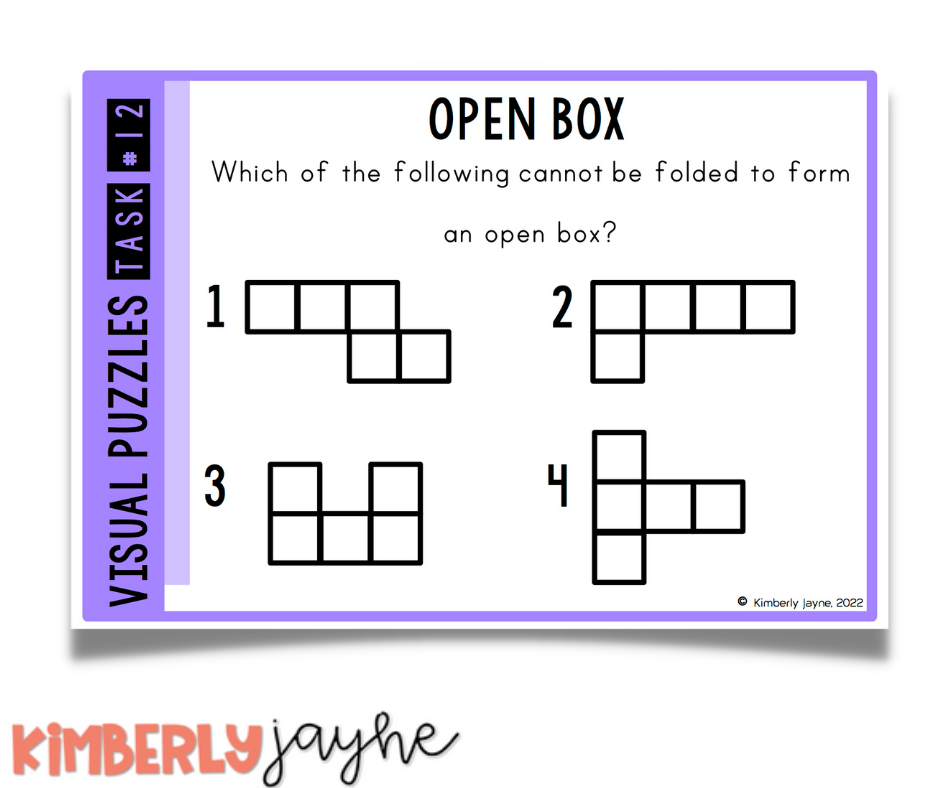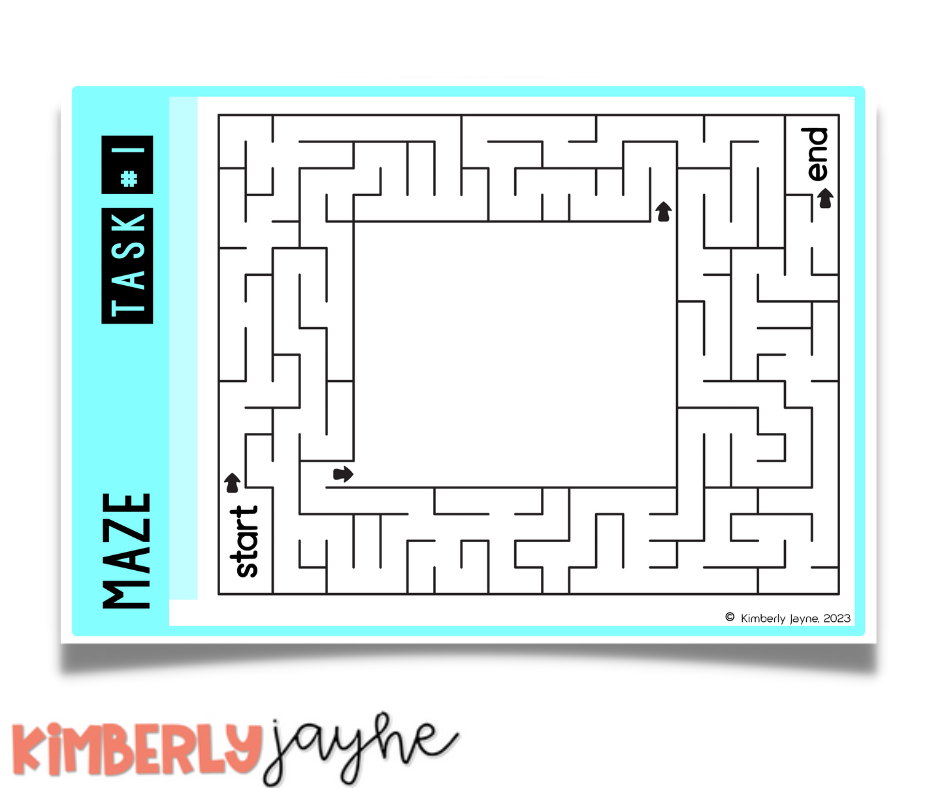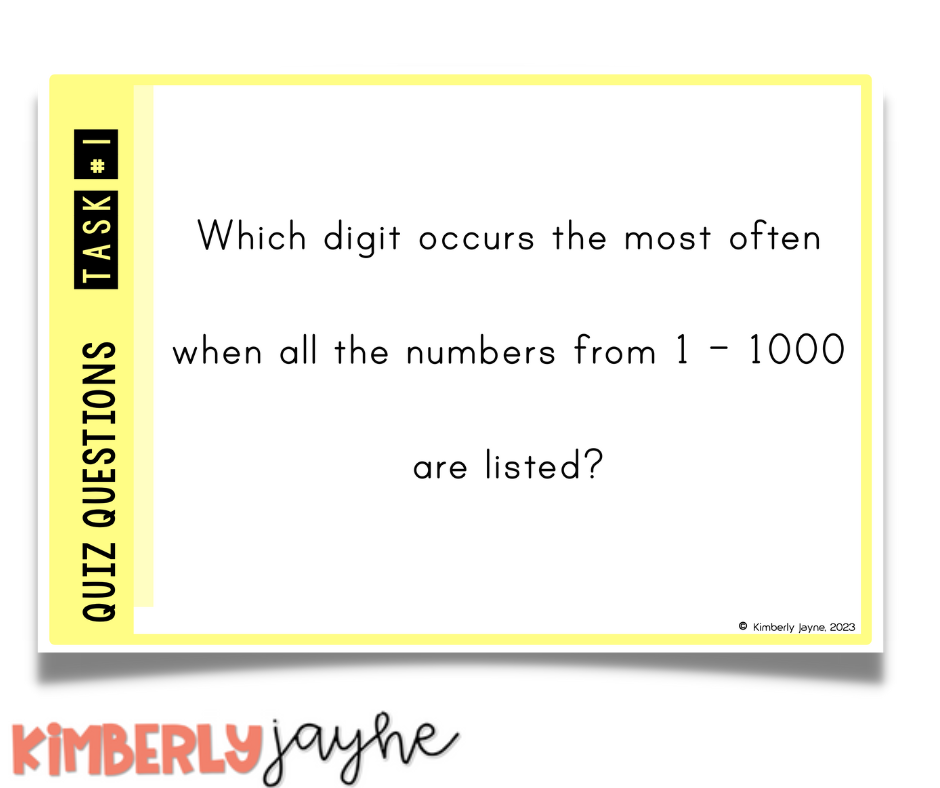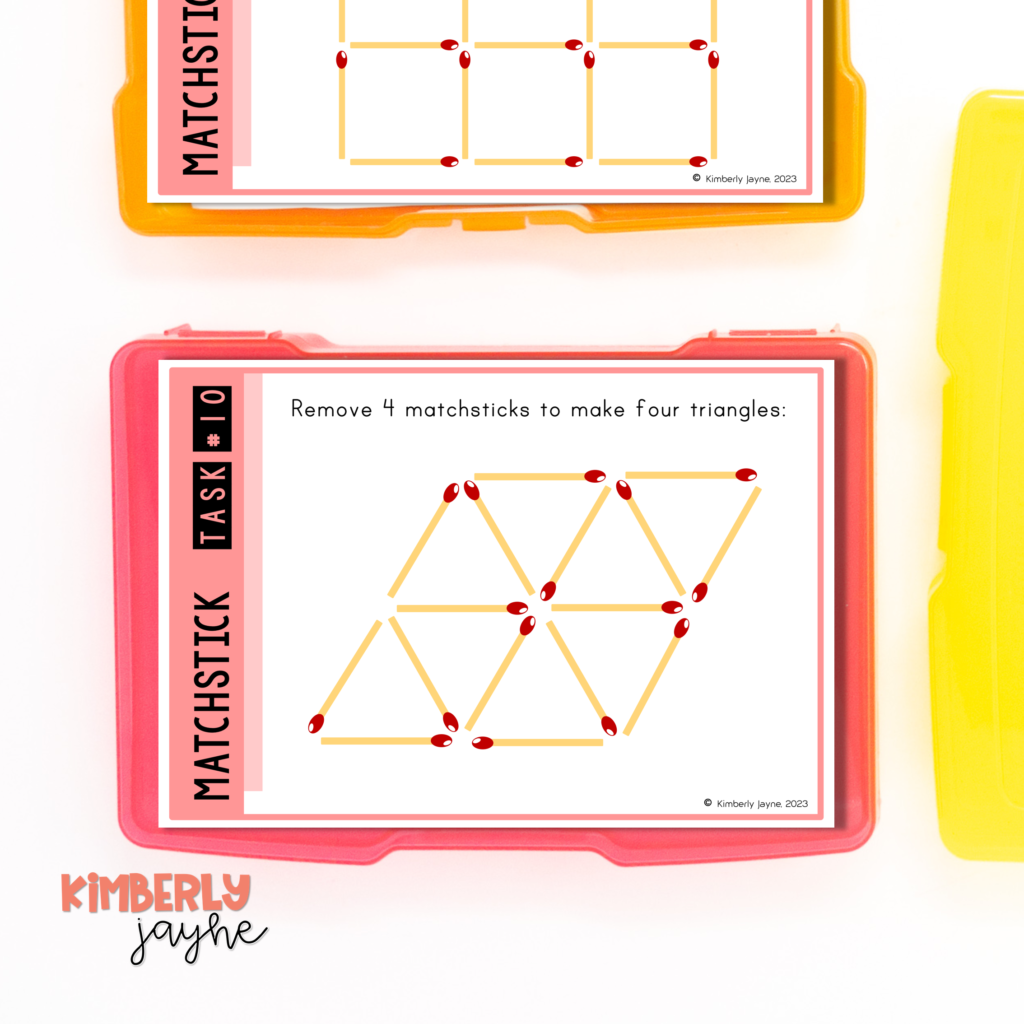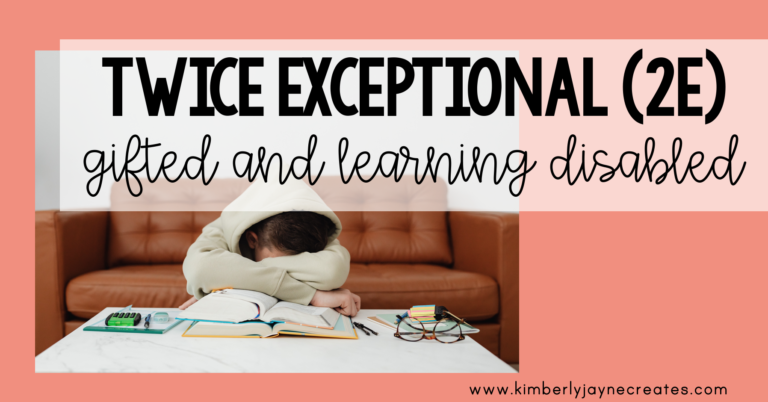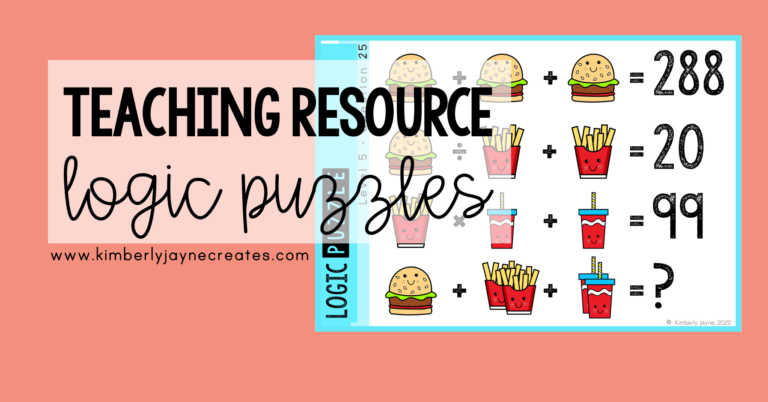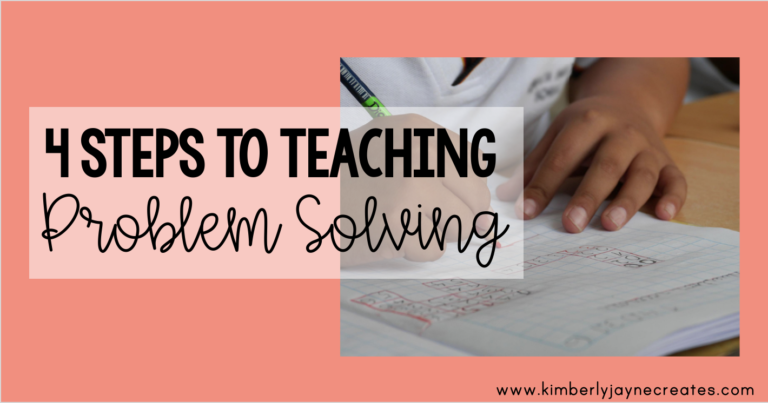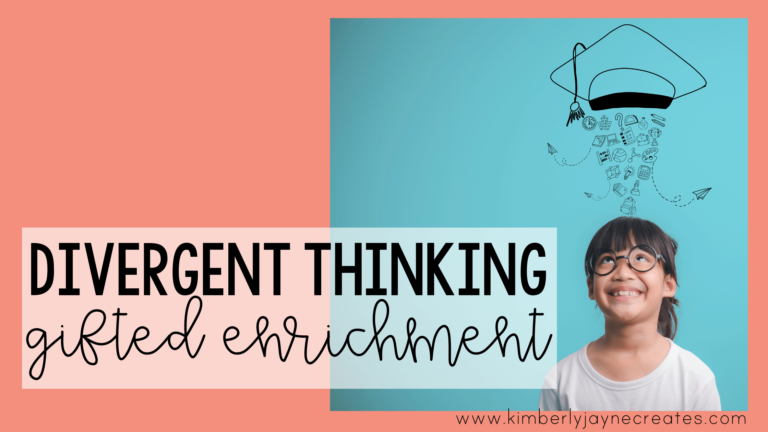Unlocking Creativity: Lateral Thinking Activities for Gifted and Talented Learners

Do you find yourself pulling your hair out trying to think of ways to provide enrichment for your gifted and talented learners? Challenging gifted and talented students in a mainstream classroom can feel like a daunting task! I am going to show you how to can cater to your high ability students in the classroom each and every day. Research shows us that providing challenging learning experiences daily is how we can motivate our gifted students to learn (Reis, Renzulli & Renzulli, 2021). We also know that up to half of gifted students underachieve in schools (Commonwealth, 2001). This means it is absolutely vital that we nurture creativity and critical thinking skills within the general education classroom. One way we are going to do that is through lateral thinking activities.
The Power of Lateral Thinking
There are three modes of thinking: convergent (vertical), lateral (horizontal) and divergent thinking. Convergent thinking tends to focus on one correct answer, whereas lateral thinking depends on creativity to find one unique and innovative solution. Divergent thinking seeks to produce many solutions, and you can read more about it here. Lateral thinking, also known as horizontal thinking, is a form of thinking where students approach problems using solutions that are not immediately obvious. They need to use indirect and creative solutions to ‘think outside the box’ and find innovative solutions. This lends itself well to gifted and talented students who have an advanced cognitive development and thrive on complexity. These students are engaged by higher order thinking tasks that allow them complexity and challenge. Lateral thinking ignites a spark of creativity in our gifted learners and empowers them to approach challenges from different perspectives and with resilience.
Integrating Lateral Thinking Activities in the Classroom
Teachers can introduce lateral thinking activities during morning work, early finisher tasks, fun homework challenges as well as alongside the regular curriculum. Examples of lateral thinking activities include riddles, puzzles that require unconventional solutions, mysteries, open ended prompts, and role-playing scenarios. Edward De Bono’s ‘Six Thinking Hats’ is a well-known example of using lateral thinking in the classroom. These activities serve as catalysts for igniting intellectual curiosity and nurturing creative problem-solving skills. Teachers can provide a blend of structured guidance and open-ended exploration to cultivate a supportive environment where students feel safe to embrace the many possibilities of lateral thinking.
Benefits of using Lateral Thinking Activities
So why bother with this extra ‘stuff’ in your classroom? Gifted learners thrive in an environment in which thinking is valued. Using lateral thinking activities in the general education classroom has a positive impact on gifted learners as they develop and apply higher-order critical and creative thinking skills that go beyond the explicit teaching of the curriculum. Students learn how to think innovatively rather than rote learn curriculum content. Plus, who doesn’t love a bit of fun and excitement in class?
Here are just a few examples of Lateral Thinking Activities you can include in your classroom:
Rebus Puzzles
These rebus puzzles engage lateral thinking by requiring students to decipher the meaning conveyed through visual representations. Students need to think outside the box to solve these rebus puzzles.
Brain Teasers
Brain teasers are classic examples of lateral thinking tasks, challenging students to explore non-linear approaches to problem-solving. These puzzles involve unexpected twists or unconventional solutions, prompting gifted learners to think beyond conventional boundaries and consider multiple perspectives to arrive at the correct answer.
Matchstick Puzzles
These matchstick puzzles exemplify lateral thinking tasks, engaging students to approach problems from unconventional angles. Rather than relying on straightforward solutions, students must manipulate and reconfigure physical elements to create new patterns or symbols. Grab these puzzles FREE HERE.
Continuous Line Puzzles
One-line drawing puzzles require students to trace a figure without lifting their pen or retracing lines. Students need to visualise and strategise their movements, considering various routes and connections within the confined space, promoting lateral thinking.
Magic Squares
These magic square puzzles require students to arrange numbers within a grid so that the sum of each row, column, and diagonal equals the same value. Learners must think laterally, exploring different combinations and patterns to solve the puzzles.
Visual Spatial Puzzles
These visual spatial puzzles encourage students to interpret and manipulate visual information in non-linear ways. Students must creatively visualize and rearrange spatial elements to discern hidden patterns or solve intricate challenges, nurturing their ability to think outside the box and approach problems from unconventional perspectives.
Mazes
Mazes serve as classic examples of lateral thinking tasks, challenging students to navigate complex pathways and overcome obstacles using unconventional problem-solving strategies. Students must creatively to analyse the pathways, anticipate potential dead ends, and explore alternative routes to successfully reach the maze’s end.
Which One Doesn’t Belong?
Which one doesn’t belong tasks engage students in lateral thinking by prompting them to identify and justify the odd one out among a set of items or elements. Gifted learners need to identify subtle differences and connections between the options, considering various perspectives and criteria to determine the difference that sets each outlier apart, fostering critical thinking and analytical skills.
Quiz Questions
These quiz questions serve as lateral thinking tasks by presenting participants with challenges that require creative problem-solving skills. Students need to think beyond the obvious and consider unconventional solutions to find the answer, making these particularly difficult questions.
Lateral thinking activities are vital in nurturing the creative and critical thinking skills in gifted and talented learners. By incorporating these activities into your classroom, you are providing a safe and challenging learning environment for students who thrive when give complex thinking tasks.
I encourage you to explore and experiment with these activities and watch how it transforms your classroom and develops the potential of your high ability students!
Comment and let me know how you went.
Are you ready to try some lateral thinking puzzles in your classroom? Try out this FREE pack of Matchstick puzzles
References:
Commonwealth. (2001). The Education of Gifted and Talented Children
Reis, S. M., Renzulli, S. J., & Renzulli, J. S. (2021). Enrichment and Gifted Education Pedagogy to Develop Talents, Gifts, and Creative Productivity. Education Sciences, 11(10), 615. https://doi.org/10.3390/educsci11100615


